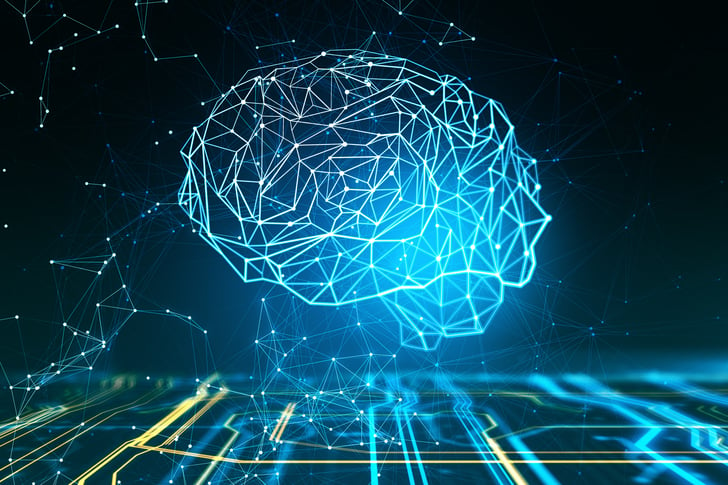
AI software patents – Is there a clash between open-source and effective licensing for universities?
Many experts interested in AI software patents vigorously debate whether open-source or effective licensing is the best method to employ.
Those arguing that effective licensing is better than open-source say that while “open-source might be good for the industry, it’s bad for business”, as quoted in the article linked below, by the lawyers at Utah-based Miller IP Law, who specialize in this field.
One of their biggest concerns is that lack of protection for an idea can prevent a business from leveraging that idea to grow. And one of the most effective sources of protection is a patent. Patents enable the holder the right to block others from exploiting an invention. In other words, patents give control.
According to this view, open source licenses which effectively forbid patents, like the GPL (General Public License, linked below), not only reduce or eliminate such control, they can also prevent a young business from growing.
Yet those arguing on the open-source side claim that open-source software is more secure and higher quality.
One of the reasons that proponents of open-source software believe it is more secure is that there are “Many more eyes are looking to find and fix problems,” wrote Ron Rymon of White Source, in an article linked below.
Open source projects have many contributors, all viewing a project and able to spot security issues and other problems. As a result, such projects can fix these problems and release new versions more quickly.
Patents vs open source for AI software
The effect of patent protected-licensing, vs open-source, distribution is particularly important in using AI software. AI is an important fuel that accelerates business processes and healthcare innovation.
But it is fast becoming a necessity for enterprises and other customers. Indeed, some have referred to AI as “the new electricity.”
Andrew Ng is the most well-known proponent of this viewpoint. Ng, chief scientist at Baidu Research who teaches at Stanford, spoke to the Stanford Graduate School of Business community as part of a series presented by the Stanford MSx Program.
In the article linked below, he states, “Just as electricity transformed almost everything 100 years ago, today I have a hard time thinking of an industry that I don’t think AI will transform in the next several years.”
This idea has been widely circulating throughout the investor community as well. Many VCs (venture capital investors) have told me personally that soon, every startup will need to have AI just to exist.
So now we come to a tricky question. Should the creator of an AI innovation seek to patent it, and thereby grow a business securely? Or should the creator turn instead to open source?
And, most importantly for the question we asked at the outset – is the answer different for universities?

Open source vs. patented software for AI
Many AI companies want to share their software with others to increase the speed of adoption and penetration to enterprise customers. However, they also want to protect their ideas with patents so that competitors don’t take over their current markets with their own best ideas.
This leads to a clash. Oxford-based researchers Nathan Calvin and Jade Leung analyzed corporate intellectual property strategies. In an article linked below, they stated:
“Many AI companies are pursuing what may seem like a counterintuitive IP strategy: aggressively patenting AI technologies while sharing them freely. They experience competitive pressure to patent to present the threat of a countersuit if another company sues them for IP infringement. However, they also experience pressure to open-source their work to attract top talent and entice consumers to use their platforms.”
AI companies who have tried to fully monetize their IP have gotten pushback. The AI company C3 AI announced that it was launching a tech licensing office after receiving a broad patent. At least one analyst thought that this was a “troll” move (see link to article in Enterprise AI News below).
C3 AI maintained that it did not want to look for infringers to sue, but instead wanted to invite collaboration and cooperation. This analyst thought that the company’s actions spoke louder than its words, and that collaboration was the last thing on the company’s mind. But in the same article, other analysts lauded the company’s move, as a win-win way to share innovations.
Implications for universities
The debate between open sharing software vs. proprietary patented software, has important implications for universities.
Daniel Katz described this debate in his blog (article linked below). Katz is Chief Scientist at NCSA, Research Associate Professor in CS, ECE, and the iSchool at the University of Illinois Urbana-Champaign.
“… the discussions (about open source vs. proprietary) lead me to summarize that university IP policies and technology transfer offices seem to be most concerned about money rather than transferring technology or knowledge in the form of artifacts”.
In his reading of the situation, Daniel Katz feels that open source is considered by universities only when they can’t make money from an invention. He further feels that university tech transfer offices effectively abandon open source innovations and don’t give them any support.
I’d like to push back on this rather bleak assessment of university interests by pointing out the example of MIT. MIT does release some of the software innovations, created by its researchers, as open source. A case in point is “FFTW - Fastest Fourier Transform In The West”. This FFT software is released in two versions: commercial (requiring a fee) and open source. The open source software is released under the GPL, meaning that it’s free to use, modify and release. The commercial version enables the company who obtains that license to avoid the requirements of the GPL – particularly to release any modifications under the same license.
You can see FFTW in the MIT “ready to sign” licensing page (link below). There’s no indication of its dual open source/not open source licensing structure on that page though – you have to click through to the FFTW FAQ to find that information (link below).
Of course, this type of generous sharing through the most “free” of open source licenses, the GPL, is much easier for large, wealthy universities with big endowments. Case in point? MIT, with an endowment of over $27 billion in 2021 – nearly half again as much as in 2020 (link below).
AI software – open source or patents?
It will be up to each university to decide whether or not they want to develop open-source AI software or proprietary AI software. One important aspect is “develop”. Just releasing code developed during a research project may not actually improve adoption by companies. Companies have a limited amount of time and resources themselves – they need “ready to use” code. So releasing code in a usable form may require further resources for development – resources that have to be paid for.
The debate over open-source software vs. proprietary software continues not only in universities but in the largest technology companies, too.
As a paper in AI Governance by the Brookings Institution stated (link below):
“At first glance, one might be inclined to think that open-source code enables more market competition, yet this is not the case. On the one hand, the public release of machine learning code broadens and enables its use. In many industries, this is likely a net boon and allows more AI adoption with less AI talent.”
Sounds great right? But as the same paper points out, big tech companies have many competitive advantages, starting with their size. Great code alone won’t be enough to support upstart competitors against these behemoths.
Personally, I believe that distribution of AI innovations by research organizations should focus on providing such innovations in the most usable form to companies of all sizes. And yes, I do have skin in this particular game. As an AI startup, KISSPlatform has very limited resources - we need all the help we can get. Funding is very important to support such distribution, for the reasons given above. Patents can help support universities financially, to create AI software that many companies can immediately deploy.
So how can universities find companies who want to license such AI software, quickly and easily? We’ll be publishing a series of articles on finding your dream partner for your university’s innovations. But one quick tip on AI: consider SMEs (small and medium size companies). These companies are often more flexible, and can close a deal much faster than their larger counterparts. Plus, they have a greater need for external innovations, as they lack the innovation resources of large companies. If you would like to discuss what options might be available for your innovations, schedule a meeting with me below!
Resources
Patents v. Opensource. (2018b, September 25). Miller IP Law. Retrieved April 13, 2022, from https://milleripl.com/blogs/patents/patents-v-opensource
Free Software Foundation, Inc. (2007, July 29). The GNU General Public License v3.0 - GNU Project - Free Software Foundation. GNU Operating System. Retrieved April 13, 2022, from https://www.gnu.org/licenses/gpl-3.0.en.html
Rymon, R. (2021, July 4). Why Open Source Software is More Secure Than Commercial Software. WhiteSource. Retrieved April 13, 2022, from https://www.whitesourcesoftware.com/resources/blog/3-reasons-why-open-source-is-safer-than-commercial-software/
Ng, A. (2022, March 11). Andrew Ng: Why AI Is the New Electricity. Stanford Graduate School of Business. Retrieved April 13, 2022, from https://www.gsb.stanford.edu/insights/andrew-ng-why-ai-new-electricity
Calvin, N., & Leung, J. (2020, February). Who owns artificial intelligence? A preliminary analysis of corporate intellectual property strategies and why they matter. Future of Humanity Institute, University of Oxford. https://www.fhi.ox.ac.uk/wp-content/uploads/GovAI-working-paper-Who-owns-AI-Apr2020.pdf
Weiss, T. R. (2021, March 3). C3 AI Launching a Technology Licensing Office After Getting Broad AI Software Patent. EnterpriseAI. Retrieved April 13, 2022, from https://www.enterpriseai.news/2021/03/03/c3-ai-launching-a-technology-licensing-office-after-getting-broad-ai-software-patent/
Katz, D. (2015, March 4). Open Source Software and University Intellectual Property Policies. Daniel S. Katz’s Blog. Retrieved April 13, 2022, from https://danielskatzblog.wordpress.com/2015/03/04/open-source-software-and-university-intellectual-property-policies-2/
FFTW - Fastest Fourier Transform in the West | MIT Technology Licensing Office. (n.d.). MIT Technology Licensing Office. Retrieved April 13, 2022, from https://tlo.mit.edu/technologies/fftw-fastest-fourier-transform-west
Frigo, M., & Johnson, S. (2014). FFTW FAQ - Section 1. FFTW Frequently Asked Questions with Answers. Retrieved April 13, 2022, from http://www.fftw.org/faq/section1.html#isfftwfree
Engler, A. (2022, March 9). How open-source software shapes AI policy. Brookings. Retrieved April 13, 2022, from https://www.brookings.edu/research/how-open-source-software-shapes-ai-policy/




